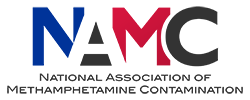Exposures associated with clandestine methamphetamine drug laboratories in Australia
Jackie Wright, John Edwards and Stewart Walker
ABSTRACT
The clandestine manufacture of methamphetamine in residential homes may represent significant hazards and exposures not only to those involved in the manufacture of the drugs but also to others living in the home (including children), neighbours and first responders to the premises. These hazards are associated with the nature and improper storage and use of precursor chemicals, intermediate chemicals and wastes, gases and methamphetamine residues generated during manufacture and the drugs themselves. Many of these compounds are persistent and result in exposures inside a home not only during manufacture but after the laboratory has been seized or removed. Hence new occupants of buildings formerly used to manufacture methamphetamine may be unknowingly exposed to these hazards. Children are most susceptible to these hazards and evidence is available in the literature to indicate that these exposures may result in immediate and long-term adverse health effects. The assessment of exposure within the home can be undertaken by measuring contaminant levels or collecting appropriate biological data from individuals exposed. To gain a better understanding of the available data and key issues associated with these approaches to the characterisation of exposure, a review of the published literature has been undertaken.
Full document here: http://namc.org.au/wp-content/uploads/2020/10/Reviews-on-Environmental-Health-Exposures-associated-with-clandestine-methamphetamine-drug-laboratories-in-Australia.pdf
